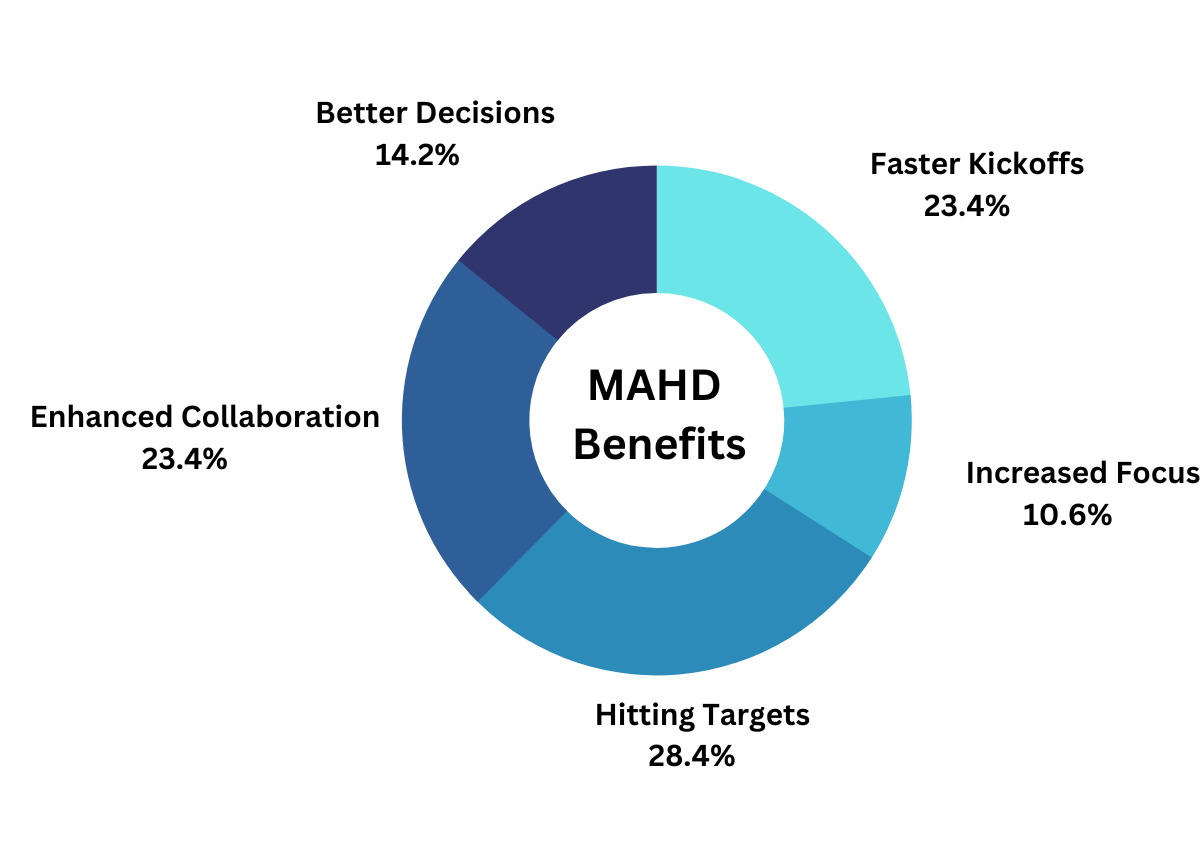The MAHD Framework has been implemented by leading product development companies in over 20 countries (and counting) and in product categories ranging from electronic toys to military contractors.
In each case they are using agile methods based on the MAHD Framework to develop products faster, manage changing requirements and increasing their focus on real customers. Other benefits companies see include:

MAHD IPAC Iterations deliver a clear understanding of tangible project progress through demonstrated prototype functionality and feedback with throughout the development process.
The MAHD Framework starts with collaborative discussions of critical project elements – customer needs, risk, innovation, schedule, targets, resources – and continues collaboration on a consistent cadence.
The MAHD On-ramp provides a more complete view of the project in a fraction of the time without the reliance on a magic crystal ball. The learning process starts immediately.

With a consistent focus on demonstrable progress and learning through customer feedback loops, data is gathered early for faster and better resource/scope/schedule tradeoff decisions.
At the core of the MAHD Framework is the early identification of where innovation will lead to market success or risks will lead to failure. This provides early focus to correct problems, add resources or find experts.

Waterfall processes have been around for decades with any estimated 80% percent of companies having some form of phase-gate NPD process. These processes have served well as an overall governance structure, but offer little guidance for how to best manage an effective way-of-working. Rigid project management tools attempted to fill in the gaps, but most teams find they do more to hinder their efforts than to improve them.
Some of the top challenges consistently shared concerning typical waterfall processes include:
Agile methods and the MAHD Framework can help with each of these challenges. Browse the 10 Benefits of MAHD Vs. Traditional NPD to see how.
The reason Agile has been adopted so quickly in software is that they needed something better.
While most teams struggle with traditional waterfall methods, SW teams were asked to follow processes like Stage-gate that were designed for hardware with little consideration that software is different. What was the point of spending months documenting your plan when can start coding, learn, add features incrementally, and test with real users to get feedback? Waterfall just doesn’t make sense. Agile’s learning cycles, team orientation and backlog prioritization methods are a much better fit.
Most organizations see the problems with traditional processes and the benefits of Agile, but find it difficult to visualize how they can work. Many teams have even struggled for years to adopt Scrum, SAFe, or other Agile for software approaches to their hardware efforts leaving them jaded on the while Agile concept. This has slowed agile adoption for HW.
Many companies are having tremendous success with Agile for hardware methods. Some are just beginning their Agile journey with the MAHD Framework and others have matured to consistently better results over previous methods. Teams who focus on the core Agile principles and modify their culture, behavior and ways-of-working to build on these principles will be successful. Those who are trying to fit the tactics of Agile into an existing NPD framework or directly applying Agile for SW methods will not. The principles are sound, but tactics of Agile must be modified whether you apply the MAHD Framework or design your own.
The objections to adopting Agile for hardware we often hear:
These objections are well-founded if you try to apply Scrum or other Agile for SW directly to hardware.
Just as waterfall processes were not designed with software in mind, Agile was not defined for hardware needs.
So not only are the benefits of Agile less obvious for physical products, attempting to implement Agile without modifications can be unproductive at best and even disastrous.
Hardware-based product development can get big benefits with agile, but to make it work, teams must abandon what they think they know about agile and look at the principles with a fresh perspective. They must consider rapid prototyping as possible and necessary, be determined to quickly adapt to changing requirements, and acknowledge that customers need to experience solutions to provide meaningful feedback.
Download the Introduction to MAHD E-book to learn about the key elements of the MAHD Framework including how to initiate projects, the MAHD On-ramp and tips to get started going MAHD.
The fastest way to learn if MAHD is right for you is to request a 45-minute overview and discussion of your situation. Whether you currently use Stage-Gate, Lean, SAFe or other methods, we can help you quickly learn the unique benefits of the MAHD Framework
Going MAHD Newsletter
Get the latest articles and resources delivered directly to your email.
© 2023 MAHD Framework, LLC